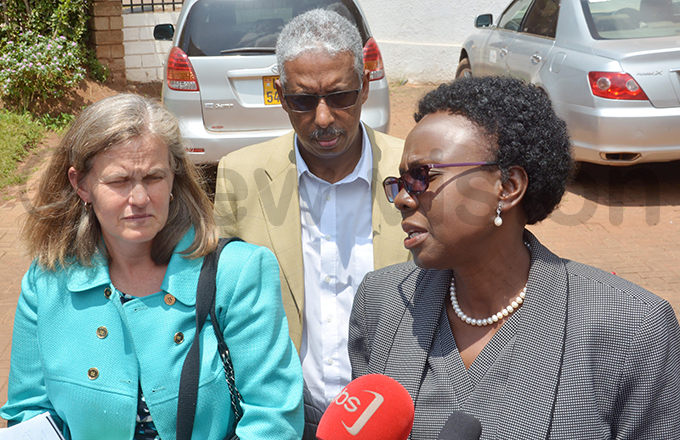Govt responds to malaria outbreak
Aug 15, 2019
Between June and August, Uganda has seen an increase of malaria cases by 40% compared to last year

The government has rolled out a massive training program for village health teams in response to an outbreak of malaria in various parts of the country.
Right now, malaria is one of the leading causes of morbidity and mortality in Uganda especially among children under five years.
"We are monitoring malaria cases, admissions and deaths in all districts and using data to guide decisions at all levels, we have strengthened the management of malaria by training village health teams at community levels to intensify education and prevention," Dr Jane Aceng the health minister said.
Addressing journalists at the Uganda Media Centre on Wednesday, Aceng said that they are also working with the private sector to ensure adequate stocks of subsidised antimalarial medications in all facilities.
The ministry has also started redistribution of malaria commodities from facilities and districts with overstocks to those with an inadequate stock of malaria commodities.
Signs and symptoms of malaria include fever, headache, vomiting, sweating, backaches, body weakness, loss of appetite and diarrhoea.
The minister also urged districts with increased cases to order for emergency supplies.
Speaking at the conference, Dr Belay Kassahun, from the Presidential Malaria Initiative called on Ugandans to take and complete dosages of malaria as advised by doctors and to always seek early treatment from the nearest health facility within 24 hours of the onset of symptoms.
 (L-R) CDC country director Lisa J. Nelson, Dr Woldemariam and health minister Jane Ruth Aceng address the media at Uganda Media Centre. Photo by Godfrey Kimono
(L-R) CDC country director Lisa J. Nelson, Dr Woldemariam and health minister Jane Ruth Aceng address the media at Uganda Media Centre. Photo by Godfrey Kimono
During the press conference, the government attributed the malaria outbreak to climate change. Between June and August, Uganda has seen an increase in malaria cases by 40% compared to last year.
"Prolonged intermittent rains in various parts of the country that have lasted till August have contributed to the increase of malaria. Also, reduced mosquito net ownership and use due to the ageing of nets distributed in 2017/18," said Aceng.
She also attributed the movement of people from high burden areas like Busoga, West Nile, and Northern Uganda to low burden areas like Kampala and south-western Uganda for the festive seasons, employment like farming to have contributed to the upsurge.
Field teams also indicate that where their survey had earlier reported low malaria prevalence in Kampala, most families have become sloppy in prevention practices. The practices include mosquito net use, closing doors and windows early, seeking of care and treatment early.
Records at the health ministry from Naguru Hospital in July indicate that 85% of the malaria patients had travel history outside Kampala.
The government appealed to the general public to sleep under mosquito nets every night, avoid self-medication and sharing of medicine, clear all mosquito breeding sites like stagnant water, bushes and broken containers around homesteads and to use mosquito repellents for those who can afford.
It is estimated that Uganda loses $200m every year to malaria. Over the years, several interventions have been instituted to fight the disease.
These range from behavioural change communication, distribution of insecticide-treated mosquito nets, indoor residual spraying and larviciding.
